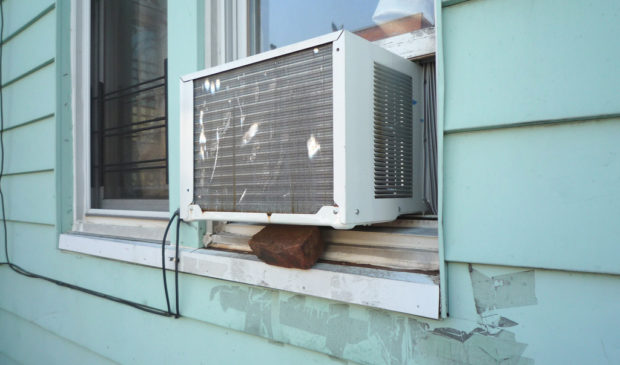Contractors cry foul over changes to Austin Energy’s weatherization program
Monday, March 25, 2019 by
Jack Craver Why is Austin Energy spending so much less on its weatherization program than in the past? The answer depends on whom you ask.
In the 2017 fiscal year, the utility spent $1.6 million on a long-standing program that offers free weatherization upgrades to apartment buildings with a significant number of low-income tenants. The following year, AE spent only $480,000. In the first four months of the 2019 fiscal year, which began in October, Austin Energy had only spent $90,000, putting it on track to spend $360,000 for the year.
According to the utility, the drop in spending is a result of the program’s success. After weatherizing tens of thousands of units over the past 30 years, there simply aren’t as many units left to serve. Second, in a tight rental market, property owners don’t have as much incentive to try to lower their tenants’ electricity bills, even if it costs them nothing.
“We’ve got to get the property owners to agree to the weatherization,” said Debbie Kimberly, an Austin Energy vice president, in an interview with the Austin Monitor. “We’ve got market barriers in this city, such as low vacancy rates, that act as impediments.”
However, a number of the contractors Austin Energy relies on to solicit participation from property owners and perform the weatherization say the utility is to blame for the decline. They argue that AE leaders have made it more difficult to get projects approved, putting in place new rules and subjecting projects to onerous scrutiny and delays.
“It was a wonderful program and all of a sudden they got new leadership,” Gerald Elrod, a contractor who left the program last year after 15 years of participation, told the Monitor. “From that point on, it was a witch hunt. They were just very vicious and treated us very poorly.”
From Elrod’s perspective, the utility seemed determined to deny projects and make the approval process as cumbersome as possible, with new eligibility requirements for the buildings and strict new testing measures.
Elrod’s business depended entirely on the AE program, but the changes forced him to abandon the program and seek work with other utilities. He said it’s a shame, since his work helped low-income tenants significantly cut energy costs.
In a September letter to Mayor Steve Adler and City Manager Spencer Cronk, Rick Middleton, owner of Affordable Screens and Glass, similarly said his company had had “multiple issues participating” in the program, citing sudden rule changes that he said the utility failed to notify contractors about. Three months before, he said, a utility official had advised him to stop seeking prospective customers until the utility finalized new rules. But that left him in the lurch with 16 properties he was currently in talks with about participating in the program.
Middleton concluded: “Contractors cannot continue to participate and invest our own time and money into new leads for changes to take place without proper communication, explanation and training.”
Middleton’s letter was part of a lengthy report submitted to city leaders by 360 Energy Savers, another contractor, encouraging changes to the weatherization program’s management. The report included a litany of allegations of erratic, arbitrary decisions by AE staff that 360 said were harming AE ratepayers as well as contractors.
Ratepayers are funding the program with the Customer Assistance Program charge, with the expectation that those funds will be invested in programs aimed at helping low-income customers, said the report by 360.
“It seems to me like they’re killing the program with a thousand cuts,” Tim Arndt, the head of development for 360, said at a hearing in September in response to AE’s proposal to reduce the program’s budget.
The contractors say that things have changed significantly since the sudden death in February 2017 of Jack Pittala, who had overseen the program for years.
Kimberly acknowledges some changes to the program, including a three-month suspension that took place at the end of 2017. She said that was in response to serious misrepresentation by a contractor about the number of low-income tenants at an apartment complex it was seeking to qualify for the weatherization program.
The utility has also increased the minimum age for eligible properties from five years to 10 years. Kimberly explained in an email: “As technology has improved, the expected life cycle of the energy efficiency measures have increased, meaning the device does not need to be replaced as frequently.”
Kimberly also insisted that any increased accountability measures were a good faith attempt by the utility to ensure that ratepayers’ dollars were being spent wisely and not to support shoddy or unnecessary work.
“I will continue to ensure quality control on our end,” she said.
Photo by Jason Eppink made available through a Creative Commons license.
The Austin Monitor’s work is made possible by donations from the community. Though our reporting covers donors from time to time, we are careful to keep business and editorial efforts separate while maintaining transparency. A complete list of donors is available here, and our code of ethics is explained here.
You're a community leader
And we’re honored you look to us for serious, in-depth news. You know a strong community needs local and dedicated watchdog reporting. We’re here for you and that won’t change. Now will you take the powerful next step and support our nonprofit news organization?










